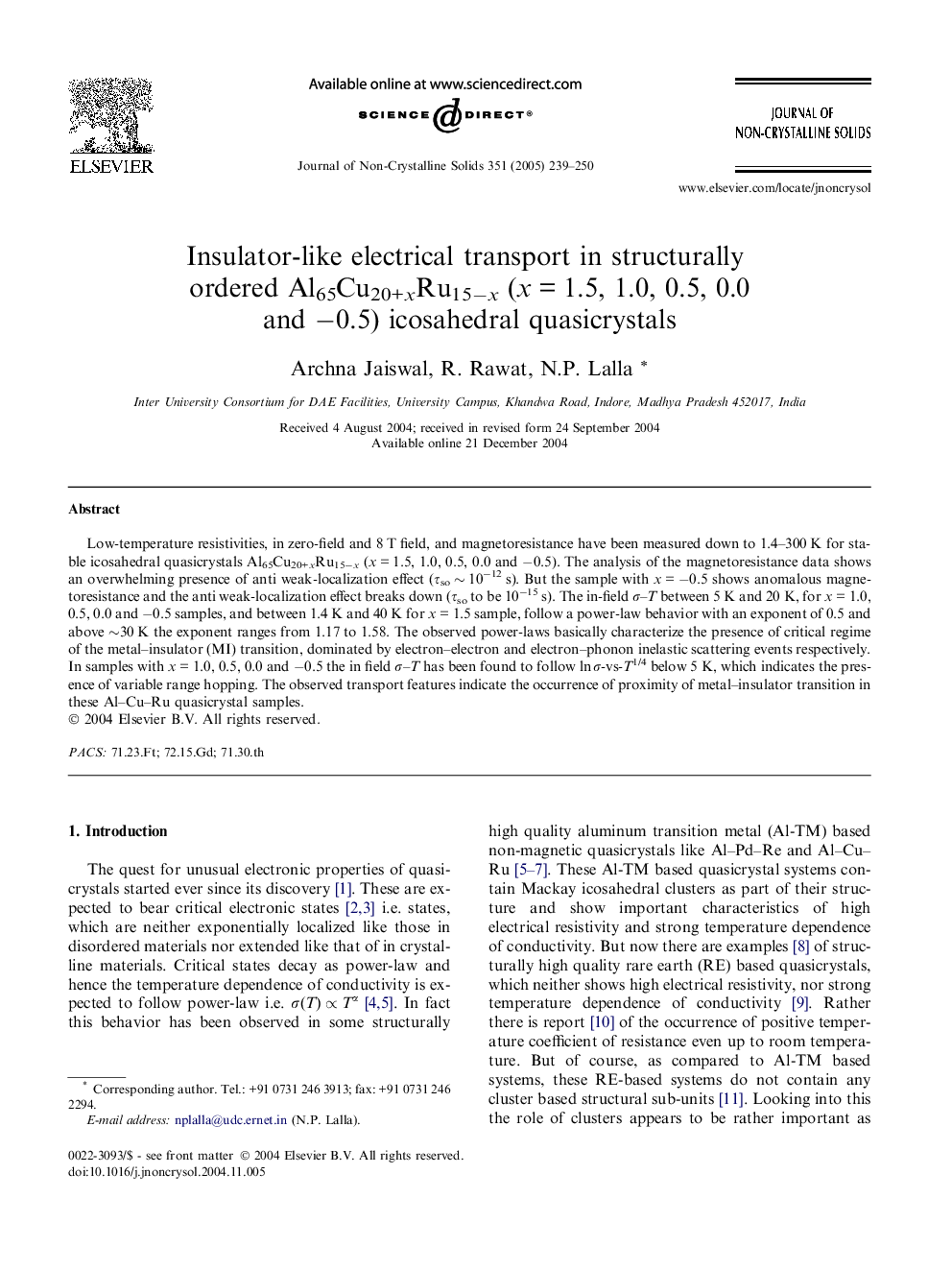| Article ID | Journal | Published Year | Pages | File Type |
|---|---|---|---|---|
| 10631285 | Journal of Non-Crystalline Solids | 2005 | 12 Pages |
Abstract
Low-temperature resistivities, in zero-field and 8 T field, and magnetoresistance have been measured down to 1.4-300 K for stable icosahedral quasicrystals Al65Cu20+xRu15âx (x = 1.5, 1.0, 0.5, 0.0 and â0.5). The analysis of the magnetoresistance data shows an overwhelming presence of anti weak-localization effect (Ïso â¼Â 10â12 s). But the sample with x = â0.5 shows anomalous magnetoresistance and the anti weak-localization effect breaks down (Ïso to be 10â15 s). The in-field Ï-T between 5 K and 20 K, for x = 1.0, 0.5, 0.0 and â0.5 samples, and between 1.4 K and 40 K for x = 1.5 sample, follow a power-law behavior with an exponent of 0.5 and above â¼30 K the exponent ranges from 1.17 to 1.58. The observed power-laws basically characterize the presence of critical regime of the metal-insulator (MI) transition, dominated by electron-electron and electron-phonon inelastic scattering events respectively. In samples with x = 1.0, 0.5, 0.0 and â0.5 the in field Ï-T has been found to follow ln Ï-vs-T1/4 below 5 K, which indicates the presence of variable range hopping. The observed transport features indicate the occurrence of proximity of metal-insulator transition in these Al-Cu-Ru quasicrystal samples.
Related Topics
Physical Sciences and Engineering
Materials Science
Ceramics and Composites
Authors
Archna Jaiswal, R. Rawat, N.P. Lalla,
